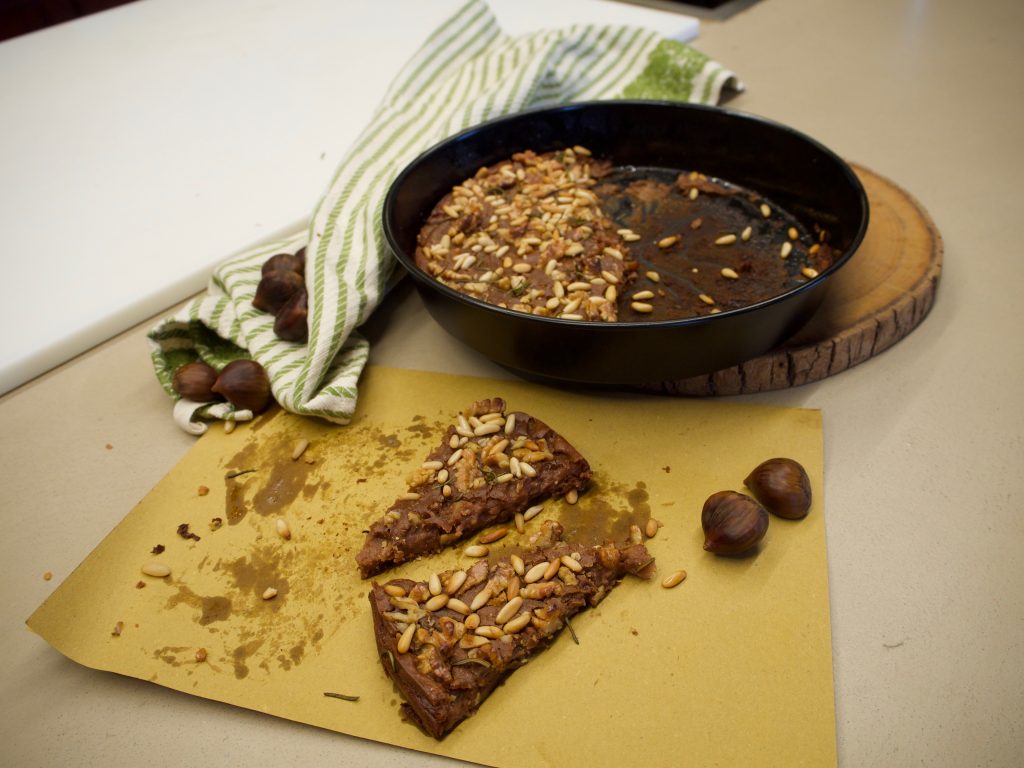
A Traditional Autumn Tuscan Treat
With rain forecast for this weekend and as Monday 1st November is a public holiday here in Italy, why not spend some time in the kitchen making a traditional Tuscan slice known as Castagnaccio. It is very easy to make, a simple slice made with chestnut flour, pine-nuts, sultanas and rosemary and like many other traditional Tuscan recipes, has been around for many years. It was originally the food of poor farmers’ as chestnuts were in abundance, cheap and very nutritious. Chestnuts, known as Castagne in Italian, were boiled, roasted, dried, made into flour and eaten like polenta or made into this slice.
Before I share Arturo Dori’s recipe, here is a bit more information about the common chestnut……..
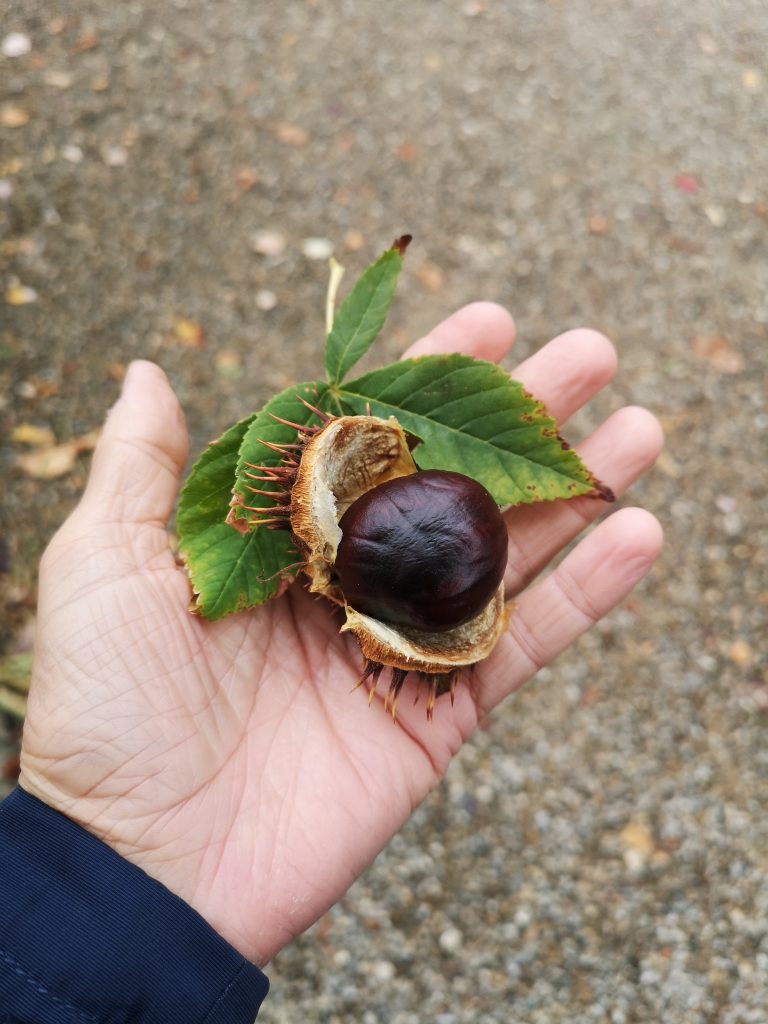
Chestnuts have for centuries been a fundamental source of food for the people living in the mountains of Tuscany.
The fruit is contained in a spiny (very sharp) capsule 5–11 cm in diameter, called a burr which are often paired or clustered on the branch and contain one to seven nuts according to the different species, varieties, and cultivars. Around the time the fruits reach maturity, the burrs turn yellow-brown and split open in two or four sections. They can remain on the tree longer than they hold the fruit, but more often achieve complete opening and release the fruits only after having fallen on the ground as the opening is partly due to soil humidity.
Known also as ‘pan di legno’, (tree bread), for many people it was the only food available.
Due to its versatility and high level of calories, chestnut flour was used all year round to make cakes, pasta, soups, polenta and bread. Even though times have changed, chestnut harvesting and manufacture is still a major activity.
For centuries many Tuscan towns have celebrated the fall season with amazing food festivals. The humble chestnut actually has many festivals held in its honour around Tuscany but perhaps the most popular is the one located in Marradi. You can catch an old steam train from Florence direct to the Chestnut Festival held in Marradi every year. What better way to admire Tuscany than to travel on a 1930’s wood carriage through the magic Mugello forests and small villages, old tunnels and beautiful vineyards.
Chesnuts are usually picked in October and then traditionally dried for approximately twenty days in a ‘seccatoio’, a special house made of stone or bricks. A fire is burnt two meters below a metal rack where the chestnuts are left to dry out. Once dry, they are taken to the mill where the outer casing is removed and the chestnuts are ground down to a delicious sweet flour.
Chestnut flour can also be used to make fritters and mixed with white flour to make tagliatelle, which pairs beautifully with a wild boar or venison ragu. The most popular way of enjoying chestnuts is to simply roast them and I personally love the smell of chestnuts roasting as I walk through the city streets. Roasting requires scoring the fruit beforehand to prevent the fruit exploding due to expansion. Once cooked, its texture is slightly similar to that of a baked potato, with a delicate, sweet, and nutty flavour.
Good quality chestnut flour is all natural, gluten-free and a great alternative to a wheat based flour in any recipe.
Now let’s make Castagnaccio……………….
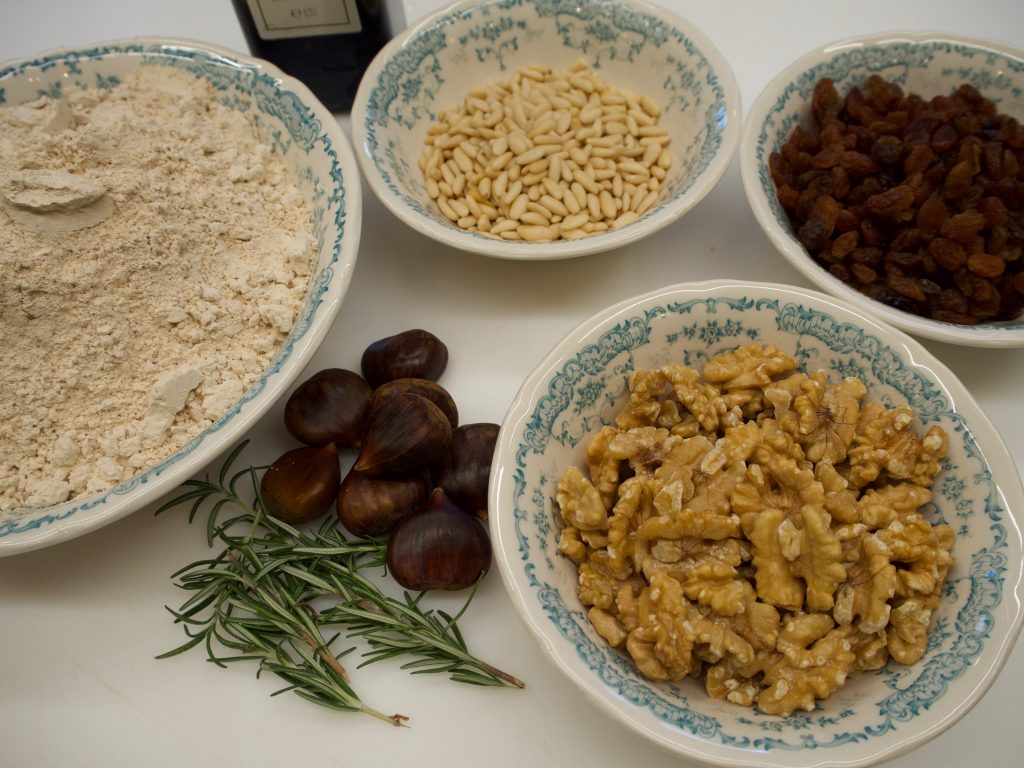
Ingredients
- 300gms Fresh Chestnut Flour
- a pinch of salt
- 350 gms luke-warm water
- 80 gms sultanas
- 4 tablespoons Extra Virgin Olive Oil + extra
- 80 gms roughly chopped walnuts
- 40 gms pine-nuts
- Fresh Rosemary
- pepper
Method
- Soak sultanas in luke-warm water.
- Sieve flour and salt into a large mixing bowl.
- Add warm water – consistency should be a thick but runny cream. (like a crepe batter)
- Add drained sultanas to the chestnut ‘cream’ and mix in. Let rest for 15 minutes.
- Add the 4 tbs of olive oil to a round 27cm baking tin, ensuring all edges including sides have an even coating of oil.
- Pre-heat oven to 180° – 190°C – fan-forced.
- Pour mixture into baking dish and then sprinkle with the walnuts, pine-nuts and sprigs of rosemary.
- Sprinkle the surface with extra olive oil and a very light sprinkle of finely ground pepper.
- Bake for 25-30 minutes until the edges have crisped and the surface is dark brown.
- Let cool slightly before slicing and enjoying – I love it while it’s still warm!
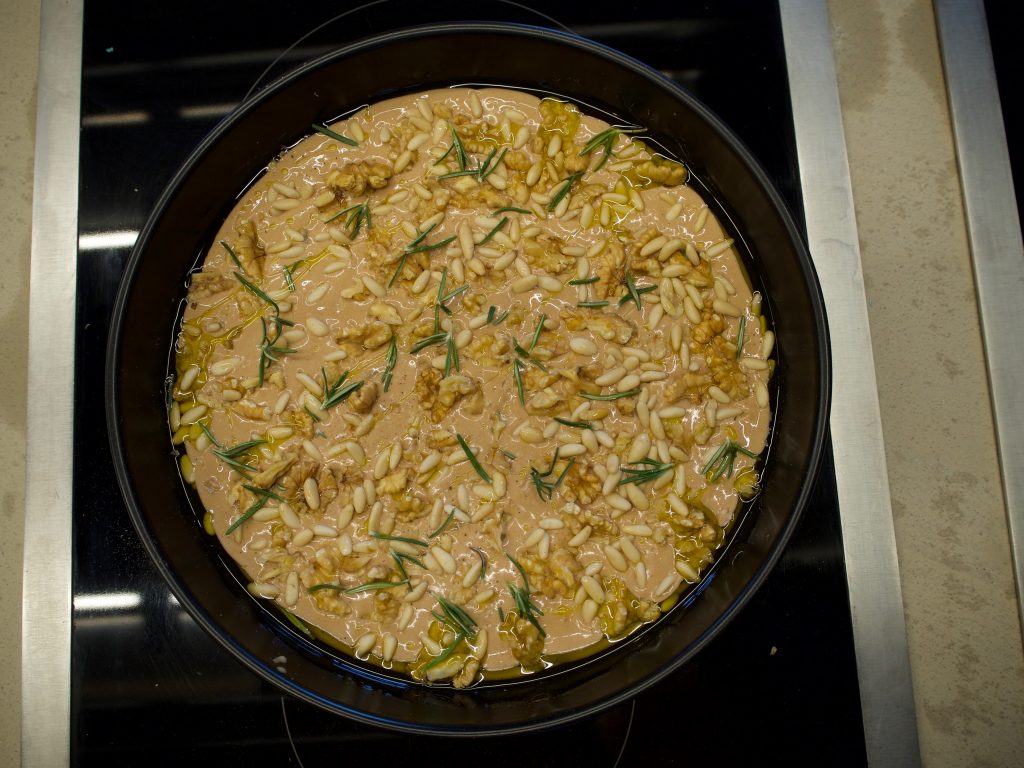
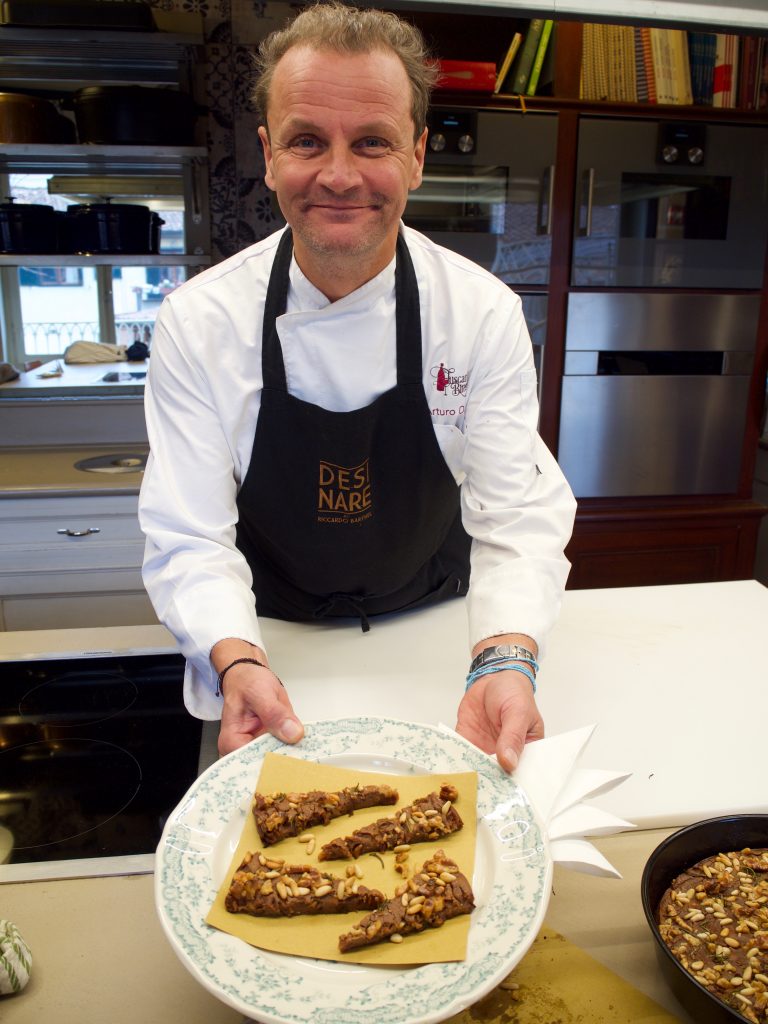
Chef Arturo Dori
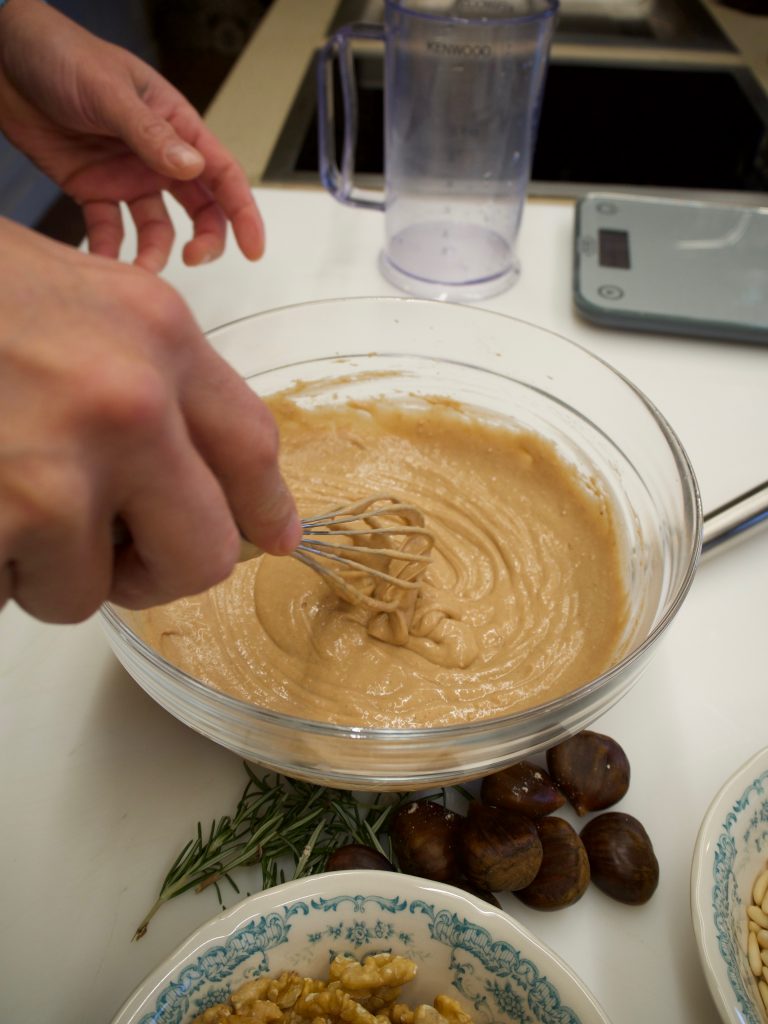
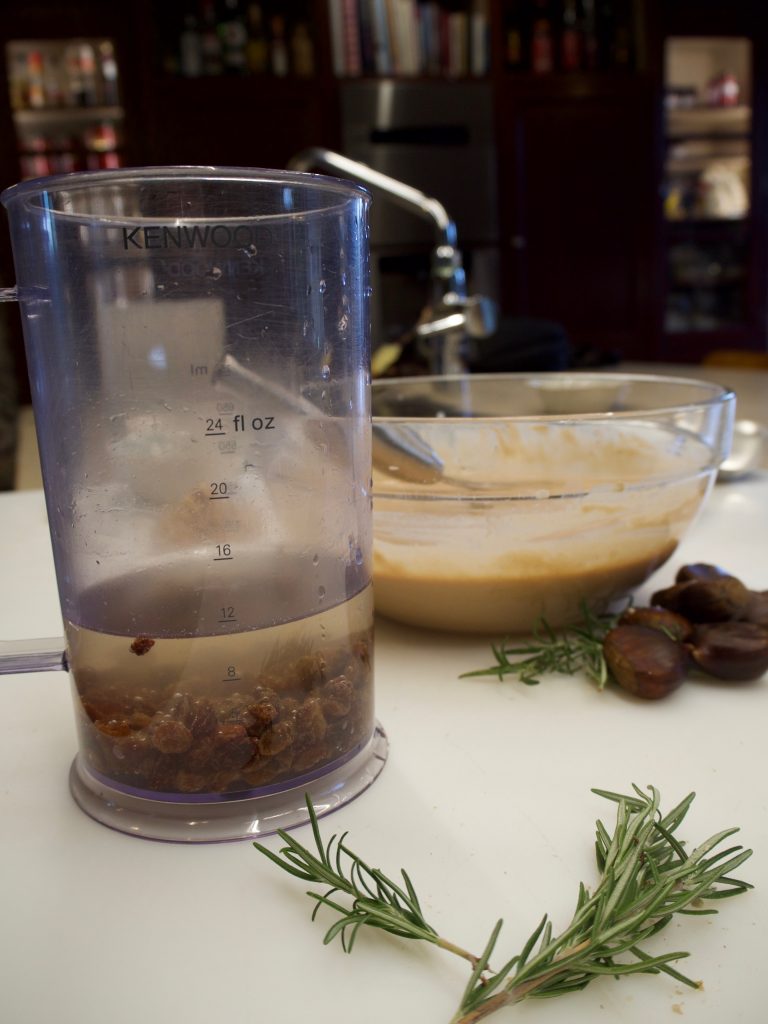
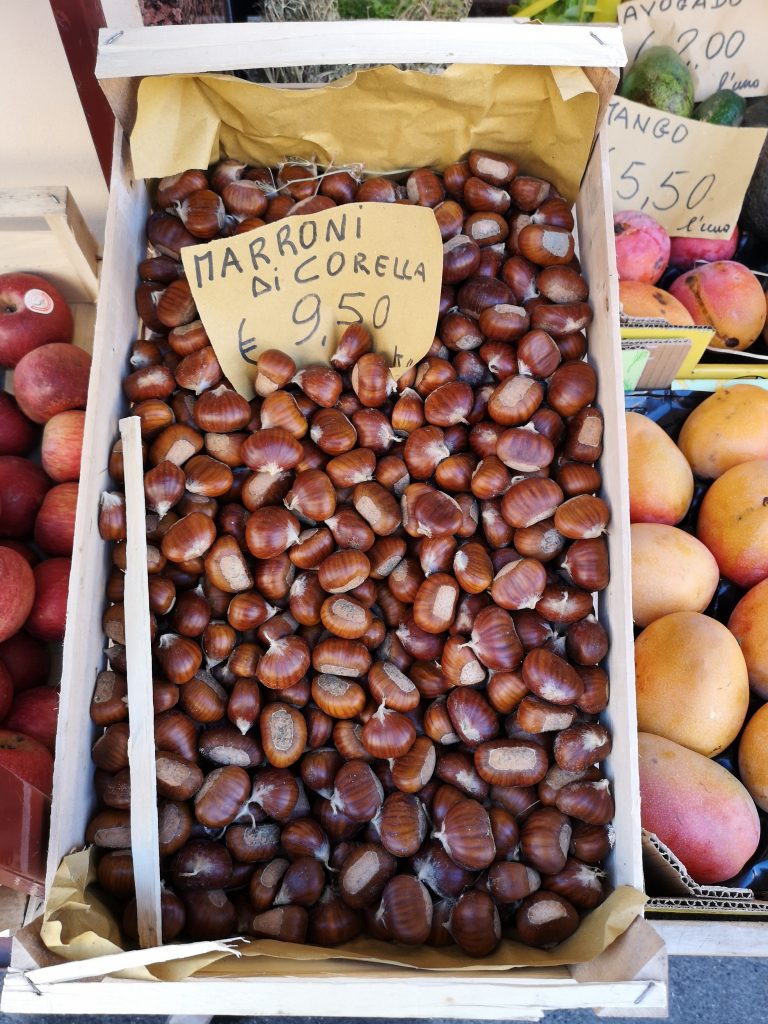
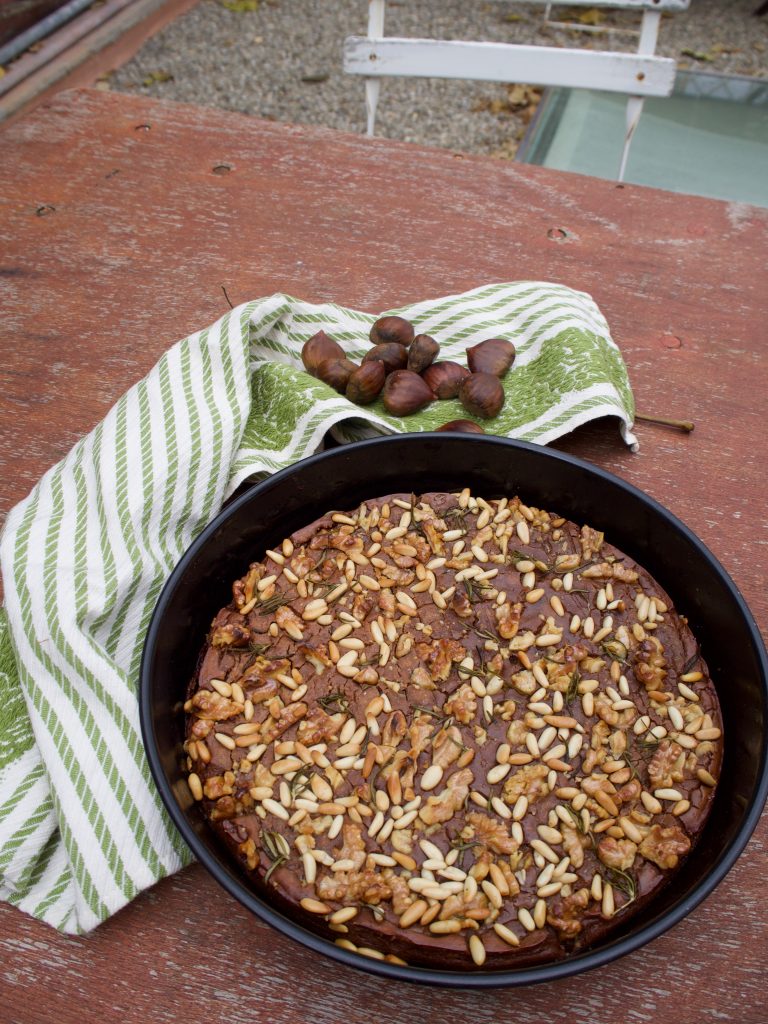
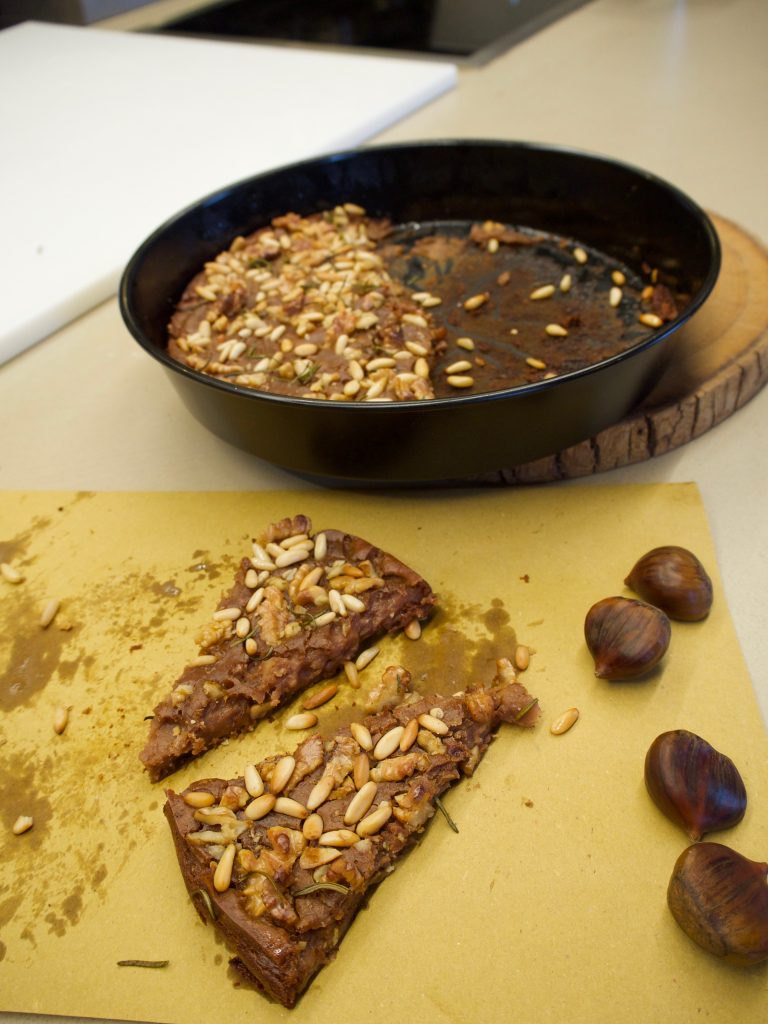
+ show Comments
- Hide Comments
add a comment